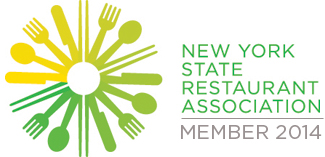Inventory control is vital to a restaurant’s profits. Your cooler, freezer and store room are just like a bank vault stacked with money. Only your money is in cans and boxes of food. Cash flow is the life blood of any business so if your money is all tied up in inventory then there is none left for other important functions such as fixed expenses and payroll. Having good inventory control means not having too much stock so that it gets used frequently, doesn’t go bad and returns a profit. Too little inventory means you will run out of product during a rush losing profits and customer good will.
The key to good inventory control is in taking a complete physical count of everything at least once a month but once a week is better. The more frequently you can count things, the faster you can react to avoid problems such as theft and spoilage. The person taking the inventory should be a manager or owner, even though it can be time consuming and tedious. Do not rely on a subordinate to count your stock. Would you trust them counting your wallet? That is precisely what you are doing. Once your inventory is taken you should have a software program in place to enter it into. This inventory amount is the basis for your monthly profit and loss statement. Your physical inventory also shows you what items are moving and what items need to go. Many a creative dinner special results from an overstock of a certain item, but sadly, many times no one knows there is an overstock and the product just goes bad in the cooler and then gets discarded. An average inventory turnover rate for most restaurants is around 5 times. For example if you have $1,000 worth of food and you sold $5,000 that would be a turnover rate of 5 times.
Inventory control also means using “FIFO” or first in, first out when socking your coolers and storeroom. Proper rotation is key for all inventory items but especially critical for perishables. If you delegate “grocery delivery day” to someone else, you must train and then follow up to see that proper stock rotation is completed. Poor stock rotation is not only bad business but can ruin your day if the local health inspector comes in for his inspection.
Restaurant accounting Inventory control increases a restaurant’s profits by keeping management informed on where the money is going. Why do we have so much of this? Can we buy this product cheaper? If the sales are the same as last months but you purchased more, where did it go? These are questions that good inventory controls can help you answer and keep your restaurant profitable but it all begins with strong restaurant bookkeeping services.

